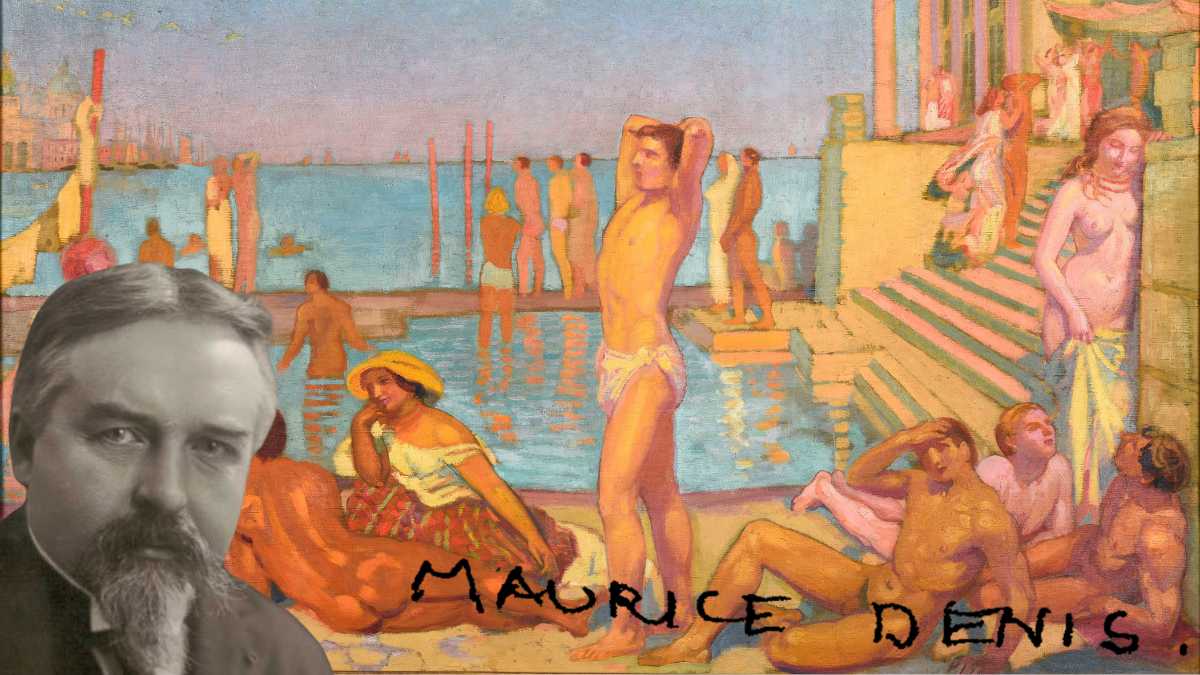Table of Contents:[hide]
Introduction to Maurice Denis
Maurice Denis was a prominent French painter and writer, best known for his association with the Les Nabis group, a post-impressionist avant-garde movement in the late 19th and early 20th centuries. His artistic contributions significantly influenced the development of modern art.
Early Life and Education
Born on November 25, 1870, in Granville, France, Maurice Denis showed an early interest in art. He began his formal art education at the Académie Julian in Paris, where he met fellow artists and future members of Les Nabis, such as Paul Sérusier and Édouard Vuillard.
Formation of Les Nabis
In the 1880s, Denis and his contemporaries formed the Les Nabis group, which translates to "The Prophets" or "The Mystics" in Hebrew. Rejecting traditional academic methods, they sought to revolutionize art by embracing symbolism and expressive color.
Les Nabis Movement
Principles and Objectives
The Les Nabis artists aimed to create art that was spiritual, imaginative, and emotionally resonant. They believed in the power of symbolism to convey deeper meanings and rejected naturalistic representations in favor of subjective interpretations.
Influence on Art
The Les Nabis movement had a profound impact on the development of modern art. Their experimental techniques and emphasis on individual expression paved the way for movements such as Fauvism and Cubism.
Style and Techniques
Denis's style was characterized by its decorative qualities and use of bold colors. He often incorporated symbolism and religious themes into his work, drawing inspiration from sources such as medieval stained glass and Byzantine mosaics.
Symbolism in Art
Symbolism played a central role in Denis's work, allowing him to convey complex ideas and emotions through visual imagery. His paintings often featured allegorical figures and mythological symbols, inviting viewers to contemplate deeper meanings.
Decorative Style
Denis's decorative style was influenced by his interest in decorative arts and his belief in the unity of form and function. He frequently integrated decorative elements into his paintings, creating harmonious compositions that captivated the viewer's eye.
Major Works of Maurice Denis
"April (The Anemones)" (1891)
"April (The Anemones)" is a testament to Denis's mastery of color and composition. The painting captures the vibrancy of spring with its lush floral motifs and dynamic brushwork, imbuing the scene with a sense of vitality and renewal.
"Fresques de Luini, à Lugano" (1916)
Denis's "Fresques de Luini, à Lugano" showcases his ability to merge traditional religious themes with modern artistic sensibilities. The frescoes, located in Lugano, Switzerland, feature richly symbolic imagery that reflects Denis's reverence for the spiritual in art.
"Jardin sous la neige" (1909)
"Jardin sous la neige" transports viewers to a tranquil winter landscape, where the interplay of light and shadow creates a sense of serenity and quiet introspection. Denis's mastery of atmosphere and mood is evident in this evocative depiction of nature.
Impact and Legacy
Denis's artistic vision and contributions continue to resonate in the world of modern art. His emphasis on symbolism and decorative elements has influenced generations of artists, and his work remains highly regarded in art institutions worldwide.
Influence on Modern Art
Denis's exploration of color, form, and symbolism laid the groundwork for numerous artistic movements, including abstraction and surrealism. His legacy lives on in the work of artists who continue to push the boundaries of artistic expression.
Recognition and Awards
Throughout his career, Denis received numerous awards and accolades for his contributions to the arts. His work was exhibited widely in Europe and America, cementing his reputation as one of the leading figures of the Les Nabis movement.
Conclusion
Maurice Denis's legacy as a Les Nabis painter continues to inspire artists and art enthusiasts around the world. His innovative approach to color, form, and symbolism challenged conventional notions of art and paved the way for the development of modern art movements.
Maurice Denis FAQs
-
Was Maurice Denis the only prominent artist in the Les Nabis group?
- No, Maurice Denis was just one of several influential artists associated with the Les Nabis movement. Other notable members included Paul Sérusier, Édouard Vuillard, and Pierre Bonnard.
-
What inspired Maurice Denis's decorative style?
- Maurice Denis drew inspiration from a variety of sources, including medieval art, Byzantine mosaics, and decorative arts such as stained glass and tapestries.
-
How did Maurice Denis contribute to the development of modern art?
- Maurice Denis's emphasis on symbolism, decorative elements, and subjective expression laid the groundwork for modern art movements such as Fauvism and Cubism.
-
What themes did Maurice Denis explore in his artwork?
- Maurice Denis's artwork often explored themes of spirituality, mythology, and the human experience. He frequently incorporated allegorical figures and symbols into his paintings to convey deeper meanings.
-
Where can I see Maurice Denis's artwork today?
- Maurice Denis's artwork is featured in museums and art galleries around the world, including the Musée d'Orsay in Paris, the Tate Modern in London, and the Museum of Modern Art in New York City.
Related Articles
Fauvism
Cubism








